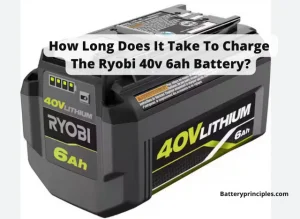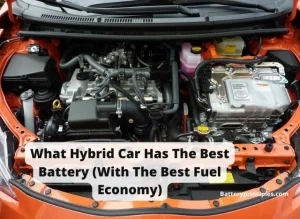It is maybe good to wait for the 4680 battery. Tesla’s revolutionary 4860 cells promise a higher range and power, in addition to reducing the cost of manufacturing electric cars. As Elon Musk said in 2020, an electric car battery should become so cheap that a compact Tesla electric vehicle should be available for $ 25,000 within three years.
So, upcoming models with this battery are more likely to hit the market in 2023.
Let’s find out more about the 4680 battery Tesla.
During Battery Day in late 2020, Elon Musk, CEO of Tesla, unveiled a new type of battery for electric cars that would solve one of its biggest problems: its high cost. It would make it possible to increase electric car performance and, at the same time, reduce their cost.
In the event, Musk detailed the five big fronts that Tesla will work on when talking about batteries for electric cars. For the manager, these advances are key to continue promoting the adoption of these cars by the market, since they are still unavailable to everyone. He also announced that they could launch a new $25,000 model in 2023.
These aspirations of Musk’s brilliant mind remind us from afar of Henry Ford, the man who revolutionized transportation in the 20th century. Will Musk be the Henry Ford of electric cars?
The 4680 cells, bigger and more powerful
Batteries have a significant impact on the final price of electric cars. Tesla’s strategy is to address two fronts simultaneously: on the one hand, it seeks to make the production process more efficient; on the other, it aims to increase the vehicle performance and reduce the final price.
We don’t have an affordable car. It is something we will have in the future, but we have to reduce the cost of batteries.
Elon Musk
One of the key innovations in Tesla is the removal of the component that connects the cells to the device. They redesigned the cells, increasing their size and reducing the distance electrons travel.
These cells become part of the vehicle’s structure, helping to save mass and reduce the number of parts to assemble. That’s, the cells would be part of the car chassis. It reduces their weight by 10%, lowers costs, and increases the efficiency of electric cars. It is the 4860 battery, which Tesla presented during Battery Day.
4680 Battery Tesla dimensions
The cells have a height of 80 mm and a diameter of 46 mm. They also incorporated silicon, which is one of the most abundant elements on Earth. Thanks to the properties of silicon, degradation by charge and discharge cycles reduce, and the battery life would be increased by 20%.
4680 battery range increase
It is six times more powerful and five times denser than normal ones and provides 16% more autonomy and 20% more power output. Another surprising thing is the 4680 battery range increases from 335 miles (Average mile range for Tesla car batteries) to approximately 500 miles on a single charge. It’s equal to 800 kilometers.
Moreover, Compared to the 2170 form factor cells (produced by Panasonic at Tesla’s Gigafactory 1), the new form factor has five times the energy intensity and six times the power.
They also announced a 14% reduction in cell prices per kWh of capacity. A more accurate price was not named, but previously the price was $100 per kilowatt hour. According to many automotive experts, once this milestone ($100/kWh) is reached, there will be a turning point, and the price for electric models will fall to the level of conventional ICE cars or even lower.
Reduced the charge travel length
Drew Baglino (senior vice president of propulsion and batteries) said Tesla engineers “laser etched” the cathode strip inside the cell to create a “tile helix” that reduced the charge travel length from 250mm to 50mm. In addition, there is no usage of cobalt in the cathode.
Did you know – Cobalt, a dangerously toxic metal contained in many Tesla and other electric/ hybrid/ Plug-in-hybrid vehicle batteries, is harmful to miners and the environment? On the consumer side, there is a risk of thermal runaway in batteries with cobalt. When this happens, the battery overheats and can sometimes catch fire or explode. (But it happening chance is rare.)
Reuse of resources
On the lithium side, Tesla hopes to increase the reuse of resources. Although this won’t happen in a few years, a pilot plant for battery recycling will soon open.
Thus, Tesla has simplified the design of batteries and reduced the number of parts for their manufacture and use. It is expected that an improvement will be generated in the connections and avoid heating. All this would mean a saving of 56% compared to current cells.
Mobile Network Standby Battery Drain; How To Fix It?
battery principles
4680 Battery Tesla – Cells Manufacturing
Tesla currently manufactures its 4680 cells in-house at the US plant in Fremont, but rumor has it that it has been looking for a production partner for a long time.
But they are likely to buy batteries from third-party manufacturers (Panasonic, LG, CATL, and others) and the company has talked about increasing orders and a willingness to buy as many suppliers as they can sell.
Panasonic confirmed plans to set up a 4680-cell manufacturing facility in Japan. The cells are intended for use in electric cars only, and Tesla is the first customer in the room.
According to its press release, Panasonic will set up two more production lines specifically for the new 4680 cells in the Japanese prefecture of Wakayama. But they did not announce whether the existing plant would be expanded, or new buildings would be erected. Batteries have been manufactured in Wakayama on 100,000 square meters since 1991. Panasonic presented the prototype of its 4680 cells for Tesla in the autumn of 2021.
According to Panasonic, the 4680 battery will enter mass production in March 2023. Initially, production will take place only in Japan. Later the production is planned to be moved to America.
Tera Factory, more productive factories
Elon Musk also unveiled his intention to not just design more efficient cells but to make his factories more productive. Tesla’s idea is to create a production chain that moves in an integrated and continuous way. The goal is to increase the pace of manufacturing to meet their demand. This would result in a reduction in the cost of batteries.
In a single process, Tesla seeks to integrate electrode production, coiling, assembly, and packaging. All without any pause and without needing different factories. If this is achieved, the production costs would be reduced considerably.
To achieve this, the company is working on building dry batteries and introducing processes with less processed materials; something that might work, but not yet on a large scale.
Under this manufacturing concept, a 75% reduction in investments per GWh produced could be achieved. In addition, it would allow the size of Terafactories to be reduced, up to 10 times smaller per GWh. By 2022, Tesla’s goal is to reach a production of 100 GWh per year.
When will model y get the 4680 battery?
According to Tesla Mag, the first Model Y with the new 4680 cells will be produced at Texas GIGA factory in Austin. But there is no definite indication of a market launch date yet.
Tesla 4860 battery release date
The company has not announced the exact release date of the tesla 4860 battery. The president of Panasonic, a major supplier of the 4860 batteries, said the Tesla 4680 cells will enter mass production in Japan in May 2023. Accordingly, the tesla 4860 battery release date is likely to be late 2023, and we can expect a model with a 4680 battery to cost close to $25,000 as Elon Musk said in 2020.
MacBook Air Battery Replacement Guide.
battery principles






